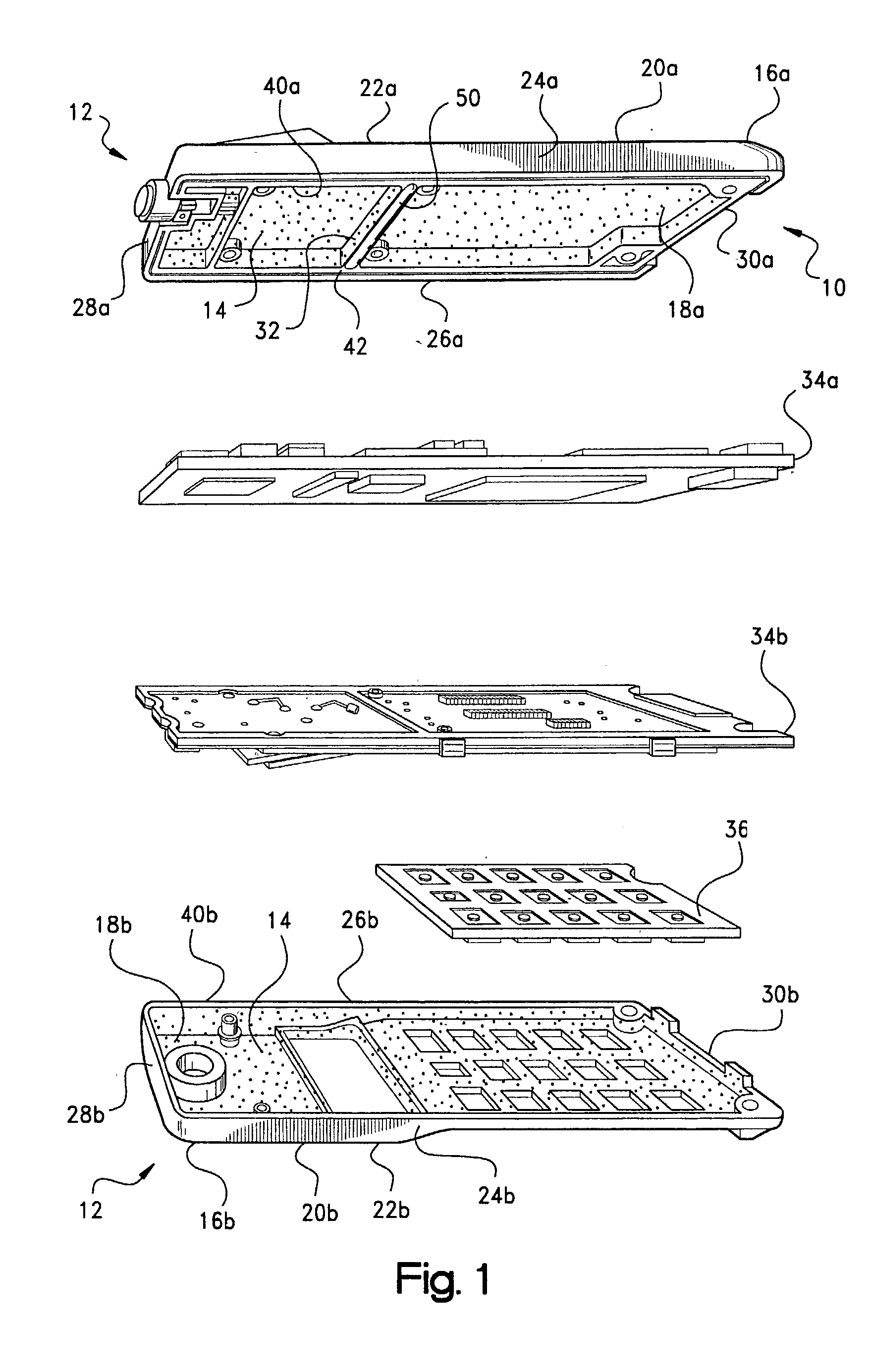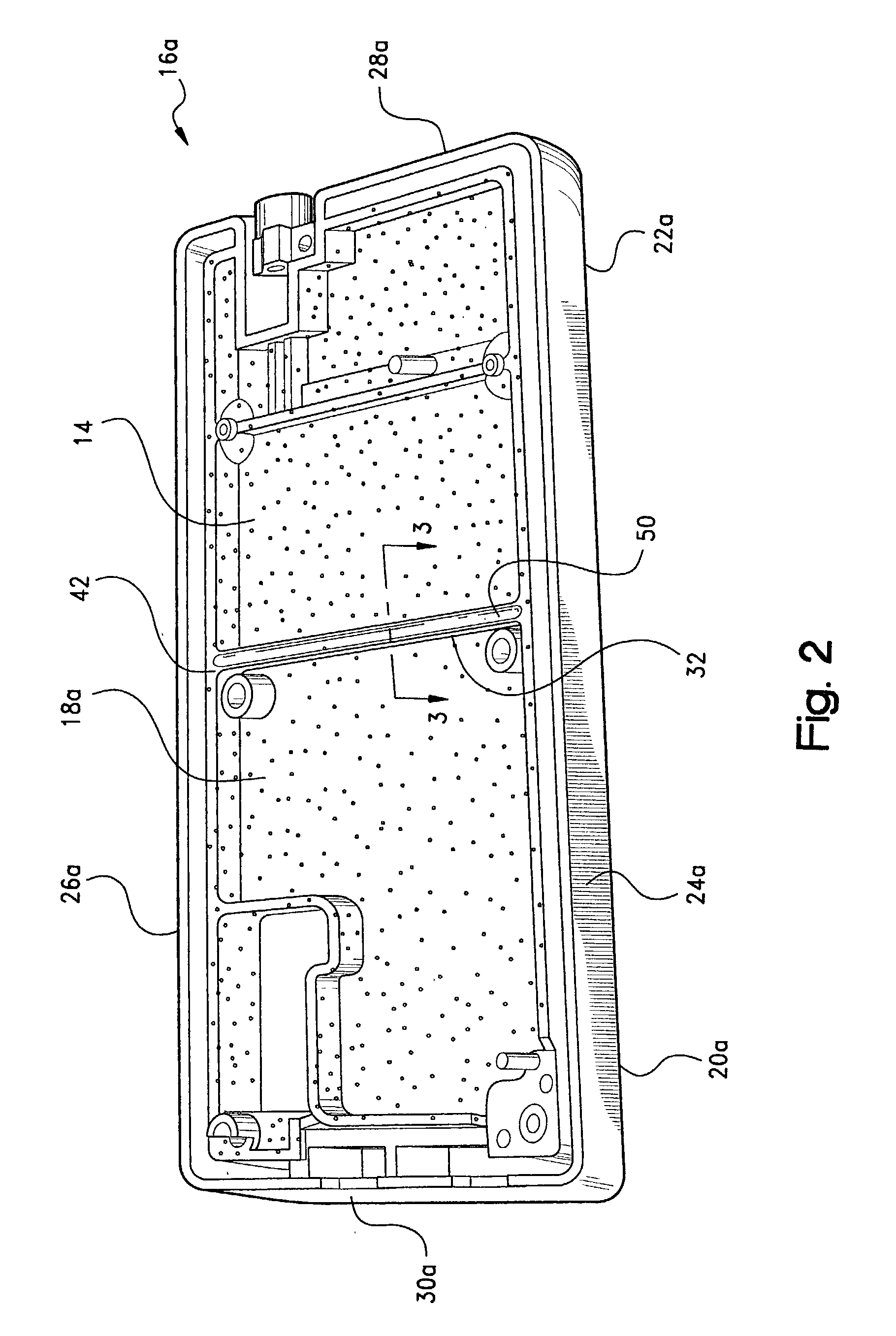Thermal-sprayed metallic conformal coatings used as heat spreaders
a conformal coating and metallic technology, applied in the direction of electrical apparatus contruction details, electrical apparatus casings/cabinets/drawers, gaseous cathodes, etc., can solve the problems of increasing the chances of emi problems, often facing performance problems,
- Summary
- Abstract
- Description
- Claims
- Application Information
AI Technical Summary
Benefits of technology
Problems solved by technology
Method used
Image
Examples
Embodiment Construction
[0047] Representative coating samples according to the present invention were prepared for characterization using an electric-arc thermal spray process. Individual panels of a 0.125 inch (3.175 mm) thick acrylonitrile-butadiene-styrene (ABS) sheet, representative of a plastic housing or case, were coated with a 1.5, 4.0, 11.0 or 17.3 mil (0.04, 0.10, 0.28, or 0.44 mm) thick layer of an 80% Sn, 20% Zn alloy. The coated sheets were cut into 2.times.2 inch (5.times.5 cm) panels for testing.
[0048] In each test, a Type "T" thermocouple was attached with thermally conductive adhesive tape to the center of the uncoated surface of each of the test panels to measure "skin" temperature. A 0.75.times.0.75 inch (1.9.times.1.9 cm) pad of a 0.07 inch (1.78 mm) thick thermally-conductive thermal interface material was interposed between a heat source and the panel. The pad, which included a layer of aluminum foil on one side, was attached to the center of the test panel with the foil surface adjac...
PUM
| Property | Measurement | Unit |
|---|---|---|
| Thickness | aaaaa | aaaaa |
| Thickness | aaaaa | aaaaa |
| Power | aaaaa | aaaaa |
Abstract
Description
Claims
Application Information
 Login to View More
Login to View More - R&D
- Intellectual Property
- Life Sciences
- Materials
- Tech Scout
- Unparalleled Data Quality
- Higher Quality Content
- 60% Fewer Hallucinations
Browse by: Latest US Patents, China's latest patents, Technical Efficacy Thesaurus, Application Domain, Technology Topic, Popular Technical Reports.
© 2025 PatSnap. All rights reserved.Legal|Privacy policy|Modern Slavery Act Transparency Statement|Sitemap|About US| Contact US: help@patsnap.com



